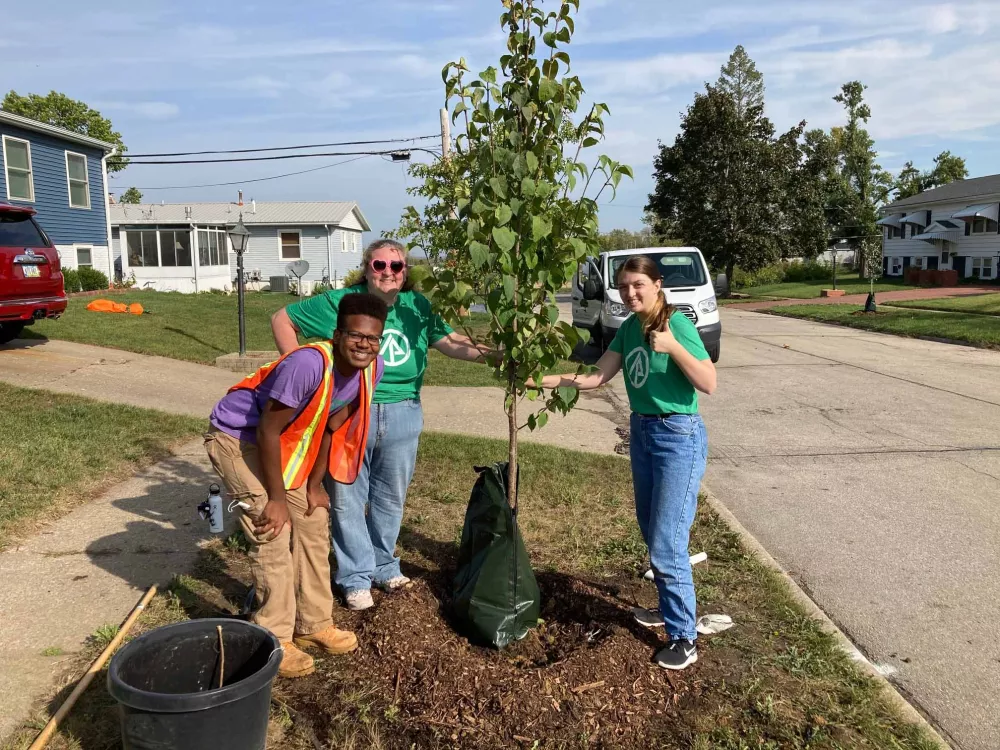Now live: The 2025 Canopy Report. Learn how Americans see trees. GET THE REPORT
Article
The Morning After a Storm
Except for the incessant mistreatment by humans, never is danger to a tree greater than during the inevitable trial by storm.

A storm can leave trees looking like there’s no tomorrow. But trees have an amazing ability to recover from storm damage.
ASSESS THE DAMAGE — CAN THESE TREES BE SAVED?
On Linwood Avenue there was considerable confusion after the storm. Neither the residents nor the city forestry department were well-prepared for handling the damage. As a result, trees were removed that could have been saved, some were left weakened and became dangerous or had their life spans significantly shortened.
With poor advice and the services of fly-by-night tree scam artists, many residents lost money, as well as the beauty and practical benefits of their shade trees. It might have been different if two simple steps had been followed:
- Other than the storm damage, is the tree basically healthy? If so, and if it did not suffer major structural damage, it will usually recover.
- Are major limbs broken? The larger a broken limb, the harder it will be for the tree to recover from damage.
- Has the leader (main upward-trending branch) been lost? The tree may live without its leader, but at best, it could be stunted or deformed.
- Are at least 50 percent of the branches and leaves still intact? A tree with less than half its branches remaining may not produce enough foliage to nourish the tree another season.
- How large are the wounds? The larger the wound in relation to the size of the limb, the less likely it is to heal, leaving the tree vulnerable to diseases and pests.
- Can the remaining branches form a new branch structure? The remaining limbs will grow more vigorously as the tree tries to replace its missing foliage. Look to see if the branches still left can eventually fill out the tree’s appearance.
- Is the tree a desirable one for its location? If the tree is in a poor location (potentially tall beneath power lines, etc.) it may be best to remove it.
MAKE DECISIONS ABOUT YOUR TREES
A storm can alter a tree’s appearance, but frequently the tree looks worse than it really is. Major limbs may be broken or damaged, foliage can be shredded or stripped, or the bark may be torn or gouged. But what at first glance may look like mortal wounds are not necessarily fatal to a tree. Trees have a remarkable ability to recover from storm damage.
It's a Keeper
If damage is relatively slight, prune any broken branches, repair torn bark or rough edges around wounds, and let the tree begin the process of wound repair. For instance:
- Minor Damage: Although the tree has been damaged, enough strong limbs may remain on a basically healthy tree to make saving it possible.
- An Easy Call: A mature shade tree can usually survive the loss of one major limb. The broken branch should be pruned back to the trunk. In the months to follow, large wounds should be monitored closely for signs of decay.
- Too Young to Die: Young trees can sustain quite a bit of damage and still recover quickly. If the leader is intact and the structure for future branching remains, remove the broken branches and let the tree close over the wounds and recover itself.
Wait and See
If a valuable tree appears to be a borderline case, resist the temptation to simply cut it down. In such a case, it is best to stand back for a while and give the tree a chance. Remember that time is on your side. After careful pruning of broken branches, give the tree some time to recover. A final decision can be made later.
- Easy Does It: Resist the temptation to prune too heavily. Remember that the tree will need all the foliage it can produce in order to manufacture the food it will need to get to the next growing season. Remove only the damaged limbs, then wait and see what happens.
- Hold Off: A healthy, mature tree can recover even when several major limbs are damaged. With large trees, a professional arborist should be brought in to assess damage on a borderline situation and to safely accomplish needed pruning and branch removal.
Say Goodbye
Some trees simply can’t be saved or are not worth saving. If the tree has already been weakened by disease, if the trunk is split, or more than 50 percent of the crown is gone, the tree has lost its survival edge.
- Farewell to a Friend: A rotten inner core in the trunk or structural weakness in branching patterns can cause a split trunk – the tree equivalent of a heart attack. The wounds are too large to ever mend, and the tree has lost at least half of its food and water lifeline between roots and leaves.
- Tree Tragedy: This otherwise healthy tree has lost too much of its leafy crown. It will probably not be able to grow enough new branches and leaves to provide needed nourishment, and it will never be able to regain its former beautiful shape.
- Hopeless Case: About all that’s left of this tree is its trunk. The few remaining branches can’t provide enough foliage to enable the tree to survive through another growing season.
